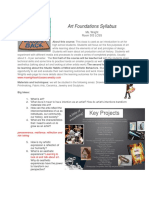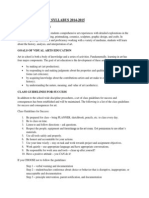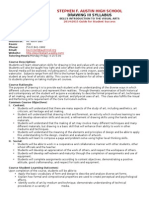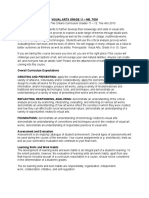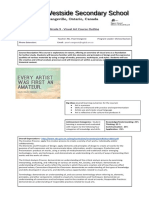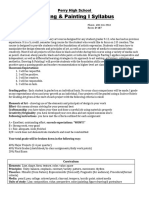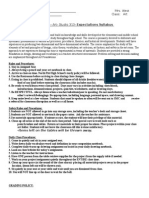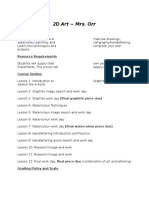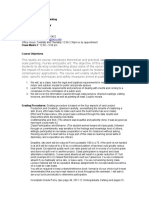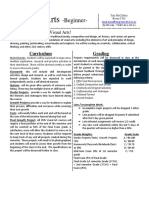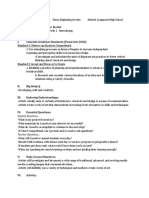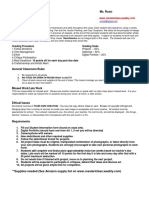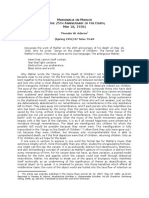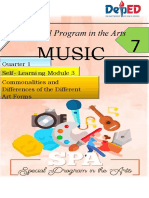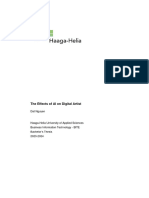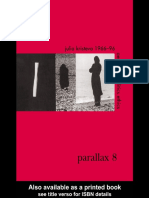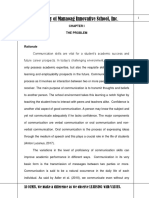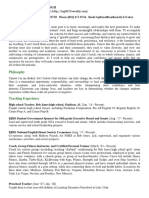0% found this document useful (0 votes)
8 views4 pagesArt2 Syllabus
The Visual Arts Intermediate course at Union Preparatory High School, taught by Ms. Masone, focuses on developing drawing skills, color theory, and various art techniques for students in grades 9-12. Key topics include experimentation with different media, art history, and career opportunities in art, along with specific grading policies and classroom conduct expectations. The course emphasizes the importance of studio habits, collaboration, and respect for materials and peers.
Uploaded by
12375179Copyright
© © All Rights Reserved
We take content rights seriously. If you suspect this is your content, claim it here.
Available Formats
Download as DOCX, PDF, TXT or read online on Scribd
0% found this document useful (0 votes)
8 views4 pagesArt2 Syllabus
The Visual Arts Intermediate course at Union Preparatory High School, taught by Ms. Masone, focuses on developing drawing skills, color theory, and various art techniques for students in grades 9-12. Key topics include experimentation with different media, art history, and career opportunities in art, along with specific grading policies and classroom conduct expectations. The course emphasizes the importance of studio habits, collaboration, and respect for materials and peers.
Uploaded by
12375179Copyright
© © All Rights Reserved
We take content rights seriously. If you suspect this is your content, claim it here.
Available Formats
Download as DOCX, PDF, TXT or read online on Scribd
/ 4


